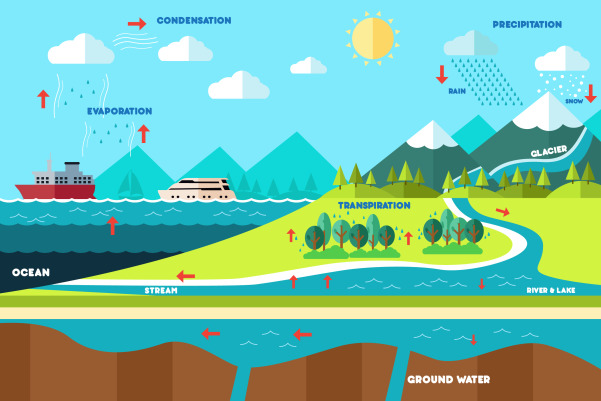

14th October 2023 (10 Topics)
Context:
As per World Meteorological Organization (WMO’s) State of Global Water Resources 2022 report, the ongoing melting of snow, ice and glaciers compounded the threat, exacerbating the risk of extreme weather events such as floods.
Findings of the Report:
- According to WMO, The circulation of water in the Earth-Atmosphere system has been significantly impacted by climate change and human activities.
- The effect on the hydrological cycle is leading to droughts and extreme rainfall events and the erratic water cycles unleashed widespread disruption, burdening livelihoods and economies.
- The report highlighted, the Asian Water Tower (AWT), the world’s largest reservoir of ice and snow after the Arctic and Antarctic regions which saw significant glacial melting in 2022.
- These alterations impacts the natural downward flow of major rivers — the Indus, Amu Darya, Yangtze and Yellow River in the region.
|
AWT covers the Third Pole, which includes the Tibetan Plateau, the Himalayas, the Karakorum, the Hindu Kush, the Pamirs and the Tien Shan Mountains. |
- The increasing pace of glacial melting in AWT, which provides a reliable water supply to almost two billion people, highlighted the deepening influence of climate change on regional water resources.
- Report emphasised SDG 13 (climate adaptation) by focusing on climate-related impacts on water systems and calling for mitigation actions.
What is Hydrological cycle?
- Hydrological cycle is also known as the “water cycle” is the normal water recycling system on Earth.
- The hydrologic cycle involves the continuous circulation of water in the Earth-Atmosphere system.
- At its core, the water cycle is the motion of the water from the ground to the atmosphere and back again.
- Of the many processes involved in the hydrologic cycle, the most important are: Evaporation, Transpiration, condensation, precipitation and runoff.
- Process:
- Due to solar radiation, water evaporates, generally from the sea, lakes, etc. Water also evaporates from plant leaves through the mechanism of transpiration.
- As the steam rises in the atmosphere, it is being cooled, condensed, and returned to the land and the sea as precipitation.
- Precipitation falls on the earth as surface water and shapes the surface, creating thus streams of water that result in lakes and rivers.
- A part of the water precipitating penetrates the ground and moves downward through the incisions, forming aquifers.
- Finally, a part of the surface and underground water leads to sea.
- During this trip, water is converted in all phases: gas, liquid, and solid.

Factors affecting Hydrological cycle:
Physical factors:
- Relief – the steeper the slope, the more quickly water will reach the river.
- Vegetation (Type and density) – the more vegetation there is, the more will be absorbed/intercepted and then transpired back into the atmosphere.
- Size of basin– water comes from a bigger area so more water is in the cycle compared to other areas.
- Rock type: Some rocks are more permeable than others (allow water to pass through them). Some rocks are better at storing water.
Human factors:
- Forestry, Urbanisation, Mining, Deforestation, Reservoir/dam building and Irrigation.
Impacts:
- Ecological Disruption:
-
- Altered Habitats: Changes in the water cycle can lead to alterations in natural habitats. For instance, droughts can lead to the drying up of wetlands and rivers, affecting the flora and fauna that depend on these ecosystems.
- Loss of Biodiversity: Disruptions can result in habitat loss and degradation, reducing biodiversity. Some species may struggle to adapt or find new suitable habitats, leading to a decline in population numbers.
- Invasive Species: Altered water flow patterns can facilitate the spread of invasive species. These species, which are not native to an ecosystem, can outcompete native species and disrupt local food chains.
- Human Socioeconomic Impacts:
-
- Water Shortages and Conflicts: Disruptions in the water cycle can lead to water shortages, sparking conflicts over access to this vital resource. This is particularly pronounced in regions with limited water resources.
- Economic Losses: Industries dependent on water, such as tourism, fishing, and manufacturing, can face economic losses due to disruptions in water availability and quality.
- Health Risks: Changes in water availability can impact public health, as inadequate water supply can lead to sanitation issues and the spread of waterborne diseases.
- Infrastructure Vulnerability: Infrastructure designed based on historical water patterns may become vulnerable to extreme events, such as flooding, if those patterns change.



